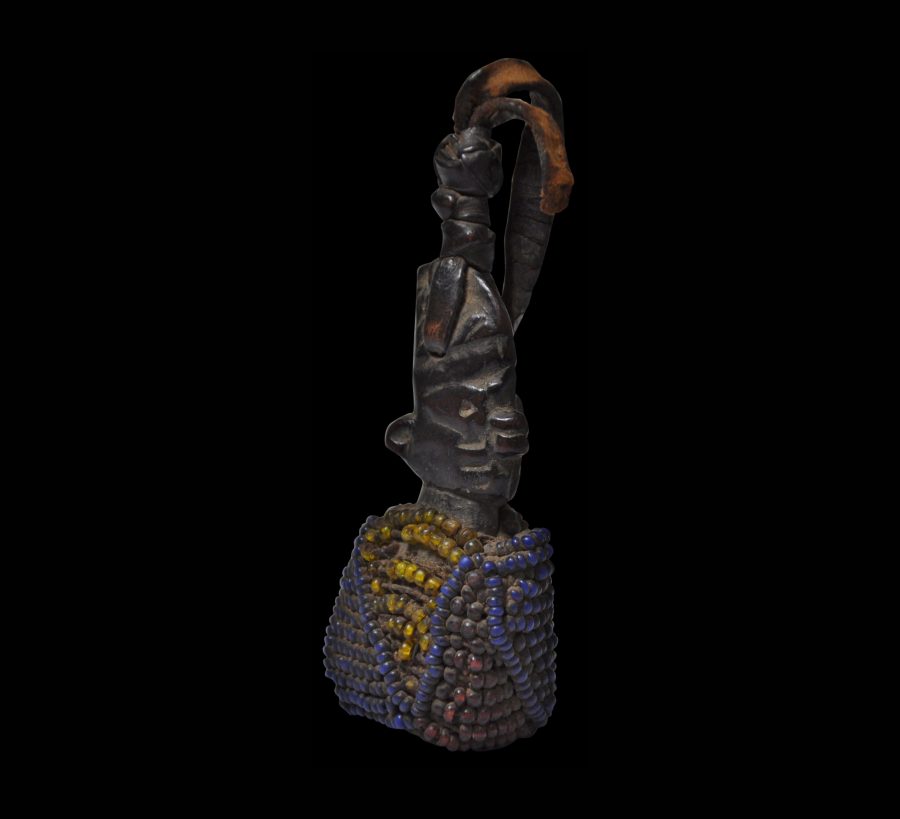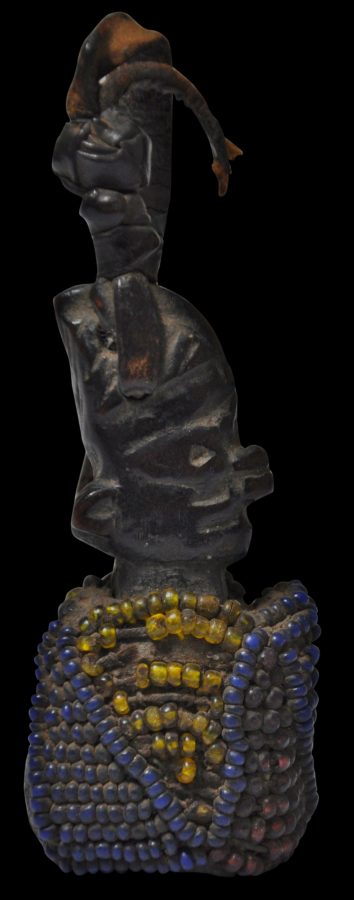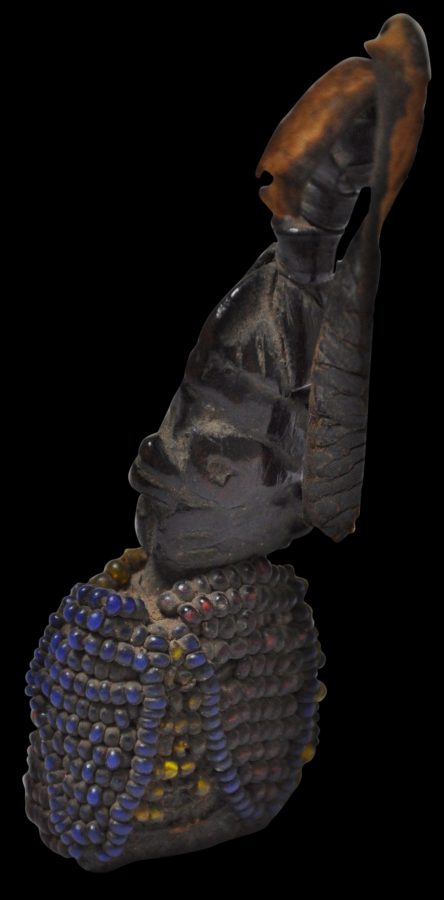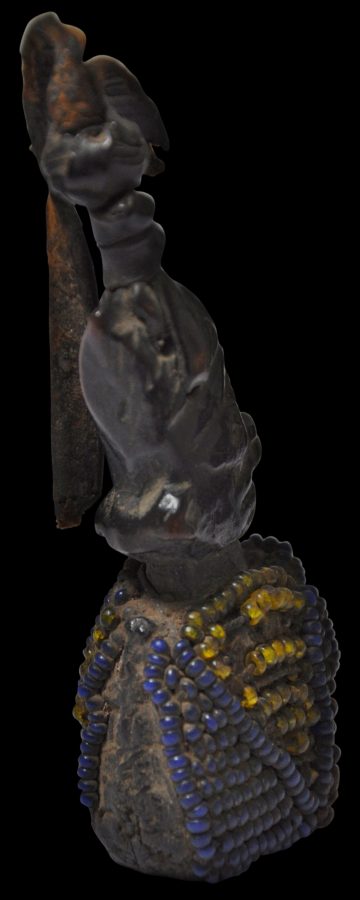Enquiry about object: 4314
Eshu Dance Wrist Pendant
Yoruba People, Southern Egbado, Nigeria 19th century
height: 8cm
Provenance
private collection, London.
This tiny figure was used as a wrist pendant during Eshu dance rituals by the Yoruba people of Nigeria. It has the most stunning, incontrovertible patina. It has clear, significant age and signs of ample ritual use. Remnants of a leather strap used to tie to figure to the dancer’s wrist is still threaded through a whole drilled through the top of the figure’s coiffure.
The figure is of carved wood. It comprises a carved head that rises from a gently tapering wooden block that has covered all over with strands of tiny red, blue and yellow glass trade beads.
The coiffure is classically Eshu. The hair is elongated and swept back.
Similar examples are illustrated in Chemeche (2013, p. 257-268).
Eshu is one of the most well-known deities in the traditional Yoruba belief system. Generally, Eshu is believed to be male. But Witte (2002, p. 78) argues that Eshu is both male and female. As both male and female, Eshu mediates both sexes and bridges the sexual energies between men and women. The figure might represent Eshu himself.
According to Chemeche (2013, p. 26), Eshu is a trickster who is able to be good and bad, trustful and mischievous, and can deliver prosperity or cause misery. He is the protector of travellers. Most importantly, he is the mediator between the realm of spiritual and mortal worlds. Hence he is the guardian of all rituals. He supervises all the sacrifices to the gods. His long phallic coiffure is unique. It symbolises a power that is both creative and destructive. This power allows him to bless those who perform their rituals properly and correctly with good fortune, and to bring misery to those who do not perform their rituals properly. Eshu is therefore often represented on the shrine alongside other deities.
The figure here is in a fine, stable condition. The patina is glossy and lustrous – almost plastic-like. The ritual wear to the figure is very clear. It is an excellent little piece.
References
Abiodun, R., H. J. Drewal & J. Pemberton III, Yoruba: Art and Aesthetics, The Center for African Art and the Rietberg Museum Zurich, 1991.
Bacquart, J. B., The Tribal Arts of Africa, Thames & Hudson, 1998.
Chemeche, G., Eshu: The Divine Trickster, Antique Collectors’ Club, 2013.
Fagg, W., J. Pemberton III & B. Holcombe, Yoruba: Sculpture of West Africa, Collins, 1982.
Polo, F., Encyclopedia of the Ibeji, Ibeji Art, 2008.
Robbins, W. M. and Nooter, N. I., African Art in American Collections, Smithsonian Institution, 1989.
Walker, R. A., Olowe of Ise: A Yoruba Sculptor to Kings, National Museum of African Art, 1998.
Witte, H., “The World View and Iconography of the Yoruba” inForms of Wonderment: The History and collections of the Afrika Museum Berg en Dal, Afrika Museum Berg en Dal 2002.





